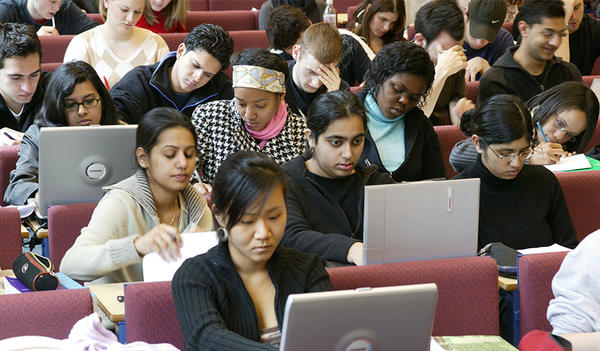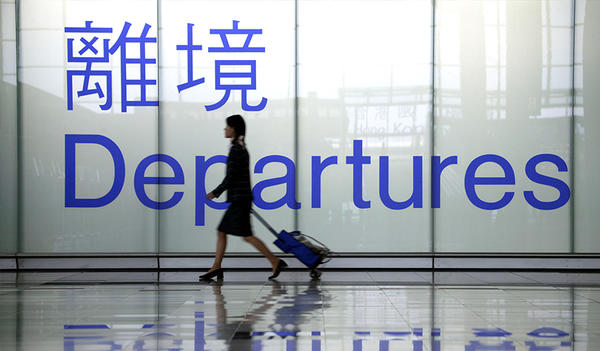Internationalization of Higher Education in Russia


Gulnara A. KRASNOVA, Doctor of Philosophical Sciences, Professor and Leading Researcher at the Russian Presidential Academy of National Economy and Public Administration.
Internationalization of higher education as a phenomenon emerged in the 1980-1990s. Later it became one of the key factors for improvements in national educational systems and institutions worldwide. The topic of internationalization of higher education prevails in the total number of publications, research, and reports on international education.
Experts assert that “one can state comfortably that internationalization is an established reality at most continental European universities and that it has become an integral part of institutional strategies for education and research. Most universities in one way or another have adopted an international dimension in their strategies, either as core to and fully integrated in the overall institutional strategy, or as a separate pillar and action line.”1
For more information refer to the Accreditation in Education Journal, and to the new specialized periodical in English—the Higher Education Discovery, with its mission to inform about integration processes in the sphere of education.
Definitions
According to Professor Jane Knight from the University of Toronto: “Internationalization is a process of integrating an international, intercultural, and global dimension into the goals, functions, and delivery of higher education. As such it is a process of change—tailored to meet the individual needs and interests of each higher education entity.”2
The main directions of higher education internationalization comprise: enrollment of international students to national universities for short-term and long-term study programs (inbound academic mobility); recruiting foreign faculty and researchers to national universities; sending domestic students to international universities for short-term and long-term programs (outbound academic mobility); designing academic excellence programs for national universities to enter the Top 100 global educational rankings; international academic and research collaboration; cross-border and transnational education; implementation of international educational standards and programs; using English as a medium to teach the subject matter; and creation of multi-lingual and international environment on campus.

As the experts state, “in spite of top down pressures brought about by globalization and regionalization, the bottom up pressures located within nation-states influence how internationalization of higher education is defined and utilized. Internationalization of higher education should be seen holistically with its multiple dimensions (including political, socioeconomic, cultural, and academic), across multiple levels (global, regional, and national), and within the processes of globalization and regionalization. Each block of this matrix would offer slightly different meanings and functions of internationalization of higher education.”3
Professional organizations, universities, and investigators around the world are actively engaged in research on various aspects of internationalization.
The most prominent organizations in this area are the European University Association (EUA), the International Association of Universities (IAU), the British Council, the Institute of International Education (IIE), the Boston College Center for International Higher Education (CIHE), the Academic Cooperation Association (ACA), and the German Academic Exchange Service (DAAD), etc.
Strategies
In some countries research into the level of national universities internationalization is carried out annually or periodically. The outcomes of these analyses provide basis for objectives and financial decisions for the selected international activities. The analysis of the internationalization process in the higher education area has revealed several types of national strategies in higher education internationalization offered by Russian and foreign researchers.
Internationalization of higher education is differentiated into external and internal. Such a division depends on the focus of this process aiming whether inward or outward the educational system. Thus, the internal internationalization implies creation of such culture and climate within the university that facilitate and support an international and intercultural mutual understanding. At the same time, implementation of all the programs, projects, and investigations includes an international dimension, for instance, it conforms to the international standards, contains foreign experience and best practices, and is realized in collaboration with foreign partners.4 As for external internationalization, it implies the process of cross-border provision of educational products and services into foreign countries by means of different educational technologies and different administrative agreements.4
In accordance with levels, internationalization of higher education is also divided into global, regional, national, industrial, and institutional (a university level).
The review of the national strategies of internationalization in the OECD countries,5 based on the 2004 OECS Report (OECD (2004). Internationalization and Trade in Higher Education: Opportunities and Challenges), defined four strategies for the internationalization policy of the OECD countries:
1. Mutual understanding approach.
2. Skilled migration approach.
3. Revenue-generating approach.
4. Capacity building approach.
Apparently, the abovementioned approaches are hardly ever implemented separately. In fact, the policy of a country in terms of higher education represents the amalgamation of different approaches.5
National aspects
Today there are several approaches in the state educational policy being implemented for internationalization of higher education in Russia. They comply with the typology suggested by the OECD for internationalization strategies of different countries.6 Namely, the “mutual understanding approach” provides scholarships for foreign citizens for acquiring education in Russian educational institutions according to Russian Government Decree No.891 “On quota for education of foreign citizens and persons without citizenship in the Russian Federation” of October 8, 20137 for extension of cooperation with foreign countries.
The strategic objective set in the Concept of the State Migration Policy of the Russian Federation dated June 13, 2012 presupposes the creation of conditions and mechanisms for involvement of highly-skilled and qualified professionals of different profiles, entrepreneurs and investors in-demand by the economy into the Russian Federation on the long-term basis. In other words, it assumes the development of the “skilled migration approach” due to a prolonged negative demographic trend in Russia.
The “revenue-generating approach” is one of the less represented in Russia, since enrollment of international students to Russian universities is mostly considered from the standpoint of “soft power.”
The export of Russia’s higher education has increased almost thrice over the past decade. For instance, for full-time and part-time education it increased from 100.9 thousand students in 2005 to 283 thousand students in 2015, and by the volume of raised funds quadrupled—from USD 356.2 million in 2004 to USD 1,462.6 million (RUB 73.1 billion) in 2015. A significant increase of the export of Russia’s higher education was achieved primarily due to the higher education support programs such as: innovative study programs (2006-2009), establishment of federal universities (2009-2015), development of national research universities (2009-2013), and the Russian Language Federal Targeted Program (2011- 2015 and 2016-2020).
At the same time, considering experts’ assessments and current trends on the international market of educational services, Russia’s export potential in this area is higher than the current enrollment level of international students.
However, the current efforts are insufficient to achieve the objectives associated with the increase of the Russian education export, because until recently the educational sector has not been considered as an export item of the budget.
The significant increase of the Russian education export is possible due to an integrated solution of administrative, regulatory, economic, financial, and academic tasks, despite a growing number of competitors from the developed countries.
This comprehensive work should include the creation of a positive environment for international students, creation of professional university teams for work on the world market of educational services, implementation of an effective national informational and advertising policy in Russia. Furthermore, targeted activities on promotion of the Russian language and the Russian study programs for general, vocational, further and open education should be implemented.
The “capacity building approach” is a framework for the governmental support of Russian students abroad. It is implemented under Decree of the President of the Russian Federation No.967 “On measures to strengthen the human resource capacity of the Russian Federation” of December 28, 2013 and RF Government Regulation No.568 “On measures for social support of Russian citizens who independently enter the leading foreign educational institutions and study majors at the highest international standards, and for their employment by organizations incorporated in the Russian Federation in accordance with their qualification” of June 20, 2014. to higher education internationalization prevails in the Russian educational policy. At the same time, the “revenue-generating approach” will have to be also developed because of a decrease in funding of higher education and the number of Russian students up to 2024 (almost twice as against the peak in 2008). Development of the “skilled migration approach” is feasible in the context of a 10% reduction of employable population aged from 15 to 64 in Russia by 2030 according to the medium variant forecast of the Federal State Statistics Service.
The “capacity building approach” has the least perspectives in terms of development and expansion at the expense of the state budget due to devaluation of the national currency and reduction of funding in general. Besides, the surveys demonstrated a decreased interest in international education. According to the data of “EDB Integration Barometer-2015”: in 2015 in Russia there was a substantial reduction in the orientation toward the European Union countries as preferred destinations for receiving education (from 46% to 25%).8 The authors of the study argued that such a tendency was associated with patriotic feelings in the country due to the worsening of the political situation around Russia. However, we believe that nowadays the data are insufficient to make such conclusions.
Global trends
It can be stated that internationalization of education in the Russian Federation is aligned with the global trends. The main aspects of internalization of Russia’s higher education are formed on the program and goal-oriented principle. It should be noted that a certain lack of transparency and assessment of social and economic efficiency can be considered a negative feature of all government programs for internationalization of higher education.
University development programs are required to include a section devoted to internationalization and international activities. As a rule, such section includes the following items: to increase the number of international students on all or certain educational levels (mainly Master students); to boost joint and cooperative programs with foreign universities and study programs in English; to enlarge international faculty; to improve faculty and student mobility; and to reinforce international accreditation of study programs.
general, while the first educational institutions focus on the development of international educational activities, the others pay their attention to international research activities. The qualitative and quantitative indicators of the abovementioned internationalization activities mostly depend on funding, material, technical and human recourses available at universities.
References
1. Gregersen-Hermans, Jeanine. “The missing link in intercultural competence development: the university’s organizational capability to deliver.” International Higher Education, vol. 78, Special Issue, 2014, pp. 8-10. http://bit.ly/HED1Kr1.
2. Knight, Jane. “Five truths about internationalization.” International Higher Education, vol.69, Fall, 2012, pp. 4-5. http://bit.ly/HED1Kr2.
3. Chao, Roger Y. Jr. “Idealism and utilitarianism in internationalization of higher education.” International Higher Education, vol. 78, Special Issue, 2014, pp. 3-4. http://bit.ly/HED1Kr3.
4. Semchenko, A.A. “Internationalization of Higher Education as a Factor of Higher Institution Competiveness.” Vestnik of Saratov State Socio-Economic University. Vol.40, no. 1, 2012, pp. 96-99. http://bit.ly/ HED1Kr4.
5. Internationalization in Higher Education in the OECD countries. OECD Center—HSE. http://bit.ly/ HED1Kr6. Accessed 6 Oct. 2016.
6. Internationalization and Trade in Higher Education: Opportunities and Challenges. OECD. 2004.
7. Russian Government Decree 891 of October 8, 2013, “On quota for education of foreign citizens and persons without citizenship in the Russian Federation” http://bit.ly/HED1Kr9a. Accessed 5 May 2016.
8. Pereboev, V. S. Integration Barometer EABP (fourth wave measurements). Rep. no. 33. p. 168. St. Petersburg: Center for Integration Research, 2015. Print. http://bit.ly/HED1Kr11.